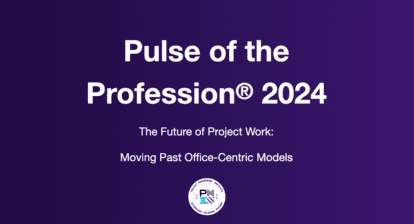The biggest decision in the life of a project is the original commitment to pursue the project. It sets the goal and begins a series of events that could last for years. It makes sense that initiating a new project should be based upon careful, thorough analysis. But with so many kinds of projects out there, are there really any universal rules?
For example, will the U.S. Army consider replacing the Humvee personnel carrier using the same process that a marketing department uses to analyze the addition of a CRM system? Does a real estate developer research the feasibility of a new shopping mall the same way a bricks-and-mortar retail store owner evaluates the move into e-commerce? Clearly these are all quite different types of potential projects, and the proper analysis for each one varies. The most complex products require the most sophisticated and time-consuming evaluation. The U.S. Army and major real estate developers have sophisticated procedures and legions of professionals trained to perform rigorous analysis. That just isn’t possible or appropriate in many organizations. But that doesn’t mean every project can’t apply some commonly accepted best practices before plunging into a project.
The wise organization is able to extrapolate from the best practices that follow and match them to their organization.
1. Involve a Wide Variety of Stakeholders
Knowing who is involved or affected by the project is critical to effective project execution. It may be more important and more difficult during project initiation — more important because this is the time we set the goals and direction of the project, and more difficult because there will be a much broader group of potential stakeholders during this early analysis. Use the following perspectives as a guide for your own efforts to include and engage the right stakeholders.
- Understand the problem or opportunity from the perspective of everyone it will affect. Using the example of the U.S. Army’s new vehicle, that includes maintenance and manufacturing as well as the soldiers using it in the field. Imagine all the people who will touch the product during the full product life cycle. What are their concerns or desires related to the problem or opportunity?
- There may be advocates for change and advocates for maintaining the current state. Why? What stake does each have in making (or not making) a change? Dr. Robert Cooper with the Product Development Institute is the leading authority on managing new product development. Among the primary factors that distinguish successful new products from failures, he cites voice of the customer and competitive analysis. Voice of the customer means actively engaging with potential customers to understand the way they perceive a product or problem. Competitors are also stakeholders. Do you know what they think about this issue?
- Federal, state, and local government agencies are full of stakeholders. Laws and regulations form constraints to the situation. Zoning laws, for example, restrict the use of real estate, governing what types of buildings and activities are allowed.
- Integration with existing systems is an issue on all kinds of projects. An e-commerce website will integrate with a secured payment processor. A military fighter jet that needs to refuel on the fly must consider the tanker aircraft that provides the fuel. A new mobile phone app must work with the phone’s operating system.
- Stakeholders have values, beliefs, and habits that form their culture. Their enthusiasm or resistance to a change may be a deeply emotional response. Dr. Atul Gawande participated in a campaign to introduce a simple pre-surgery checklist into operating rooms and found that the hierarchical relationships between doctors and nurses created a major obstacle to adoption.
Viewed from this perspective, it might seem that there is a never-ending list of stakeholders and that seeking them all out will take an eternity. That is not the intention. However, it reinforces that the analysis performed to build a project proposal is not trivial and often requires specialized skills and knowledge. The bottom line is that listening to stakeholders will surface requirements and constraints. The earlier these are exposed, the cheaper they are to manage.
2. Clarify the Problem Before Proposing a Solution
It seems pretty obvious that we should agree on what problem is being solved before coming up with great ideas to solve it, but not doing this is a classic mistake. Failure to clarify the problem is a common source of disappointment, particularly because it is routinely discovered after the project is complete. Call it human nature. Reinforce it by applauding it as being decisive and action oriented. Do it because that’s what the customer asks for. But taking action without clarifying the problem will always be a mistake.
Every sound product-development or problem-solving approach shares this principle. Define the problem as the gap between the current state and the ideal state, often literally referred to as gap analysis.
The ideal state should not include a specific solution, but rather the capability we want but don’t have. Describe the primary success criteria in terms of what the organization or customer will be able to do as a result of the project’s successful completion. Many completed projects are a disappointment to the customer because they don’t really address the core business or functional need that the customer had. It takes skill to uncover and document enterprise requirements, because they usually lurk beneath the surface — below the symptoms of the problem or the customer’s perception of what solution should be implemented. Remember that these requirements will be elaborated on during subsequent phases of the project.
By disciplining ourselves to focus on defining the problem, we expand the range of possible solutions. We are able to get beyond the initial solution that seems so obvious and explore all the possible ways to achieve our goal. Further, the “ideal state” requirements provide the framework for evaluating the possible alternatives.
3. Quantify the Benefits and Costs of the Alternatives
This practice assumes that multiple options are being evaluated. Maybe it goes without saying that when we analyze a problem or opportunity, we need to generate several options, rather than just pursue the first one that bubbles up. That is certainly the only way that truly new ideas are created.
For each of the many possible approaches that have been proposed, rank them against the enterprise requirements and quantify their benefits and costs as much as possible. Quantifying the benefits will demonstrate how the alternatives vary in their results. Quantifying the costs will provide a foundation for a financial analysis, such as return on investment (ROI). Since most alternatives analysis requires us to compare apples and oranges (options that have different advantages and disadvantages), finding ways to quantify the costs and benefits will allow us to see why we might want to pursue a lower-cost option that produces a lesser result. Or it could justify making the big investment with the big payoff.

This article is excerpted from the new book, The Fast Forward MBA in Project Management, 4th Edition. Copyright 2011. This material is used by permission of John Wiley & Sons, Inc.







